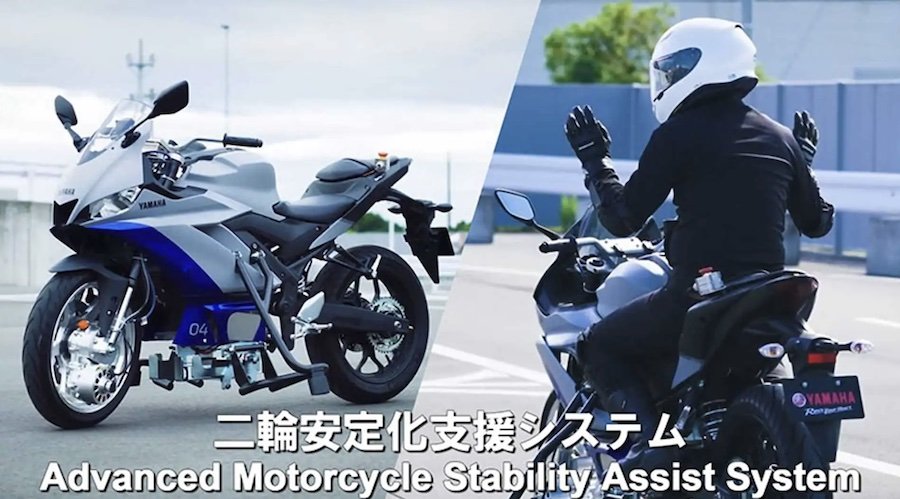Rider aid systems have come a long way in the last decade. From sophisticated multi-level traction control to lean-sensitive ABS, the industry only refines its safety measures with each passing year. Manufacturers such as Honda even have zero collision fatality goals in place to motivate further rider aid development. Big Red isn’t the only brand prioritizing safety initiatives, though.
Yamaha has long-used automated systems and robots to help develop its new technology. Whether it’s the Motobot from 2015 or 2017’s 2.0 version, the bLU cRU has spared no cost in the name of safety. The OEM’s latest whizbang device takes a more practical route, however. Christened the Advanced Motorcycle Stability Assist System (AMSAS), the self-stabilizing system aims to reduce low-speed tip-overs.
Team blue devised the device as a response to the slight uptick in motorcycle-related deaths between 1990 and 2020. While automotive fatalities steadily decreased during this period, motorcycle deaths remained consistent or increased. According to Yamaha, 30 percent of motorcycle crashes result from rider error while motorist mistakes or negligence account for 50 percent of motorcycle-related collisions.
Among all crashes, Yamaha reports that 70 percent occur within two seconds of the accident trigger. In an attempt to lower these figures, the company continues to develop “systems that inform the rider of surrounding vehicles, traffic rules and conditions, or even predictions of potential risks". Iwata also seeks to equip its vehicles with onboard rider protection devices and automatic emergency services contacting systems.
In addition to those preventative and reactive measures, Yamaha hopes the AMSAS helps riders avoid crashes in real-time. The self-balancing rig relies on a 6-axis Inertial Measurement Unit (IMU) along with drive and steering actuators. At low speeds, the actuators keep the motorcycle upright thanks to inputs from the IMU. In the video above, the development team demonstrates this autonomous balancing act by instructing the test rider to release their grip on the bars.
Yamaha also touts the system’s versatility, as the manufacturer can equip the AMSAS on existing motorcycles without altering the frame. The budding technology hints at the firm’s future direction and we can’t wait to see how it falls into Yamaha’s comprehensive safety system.
Verwandte Nachrichten

